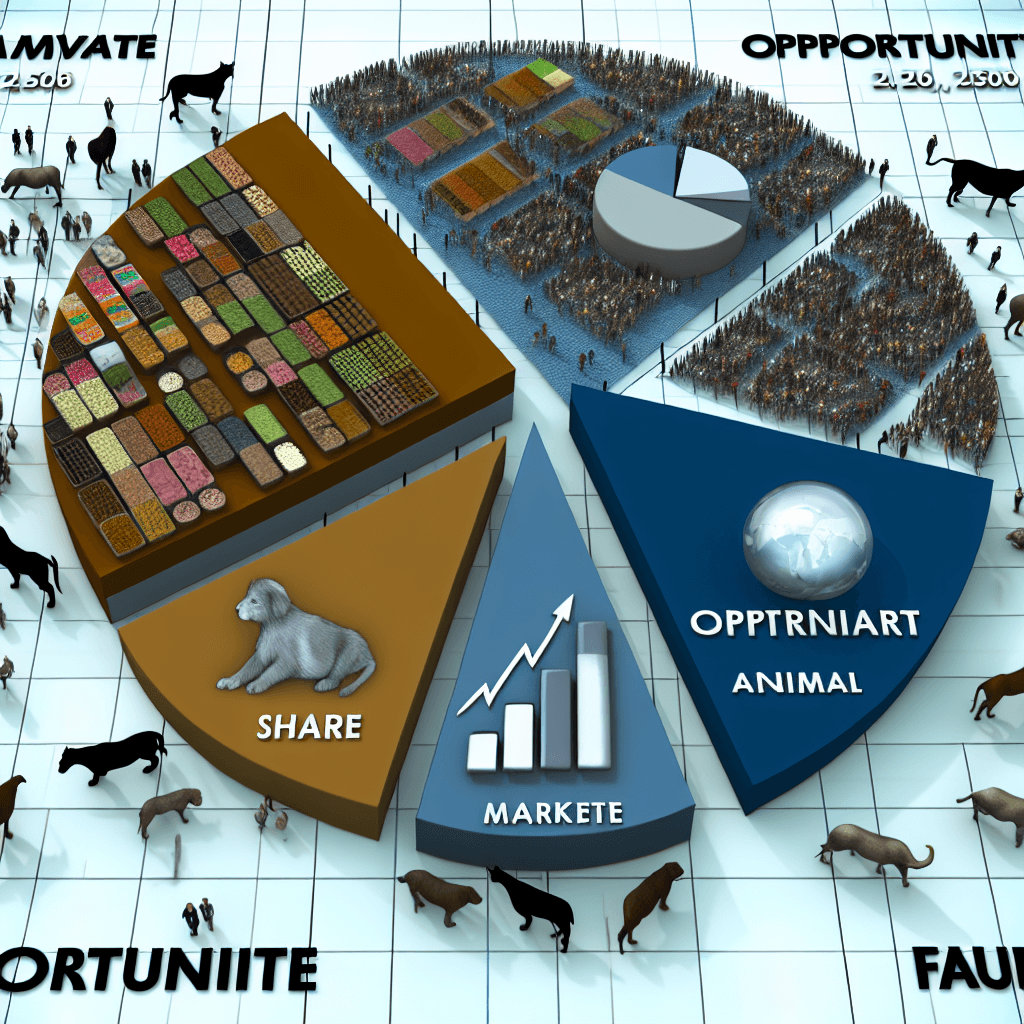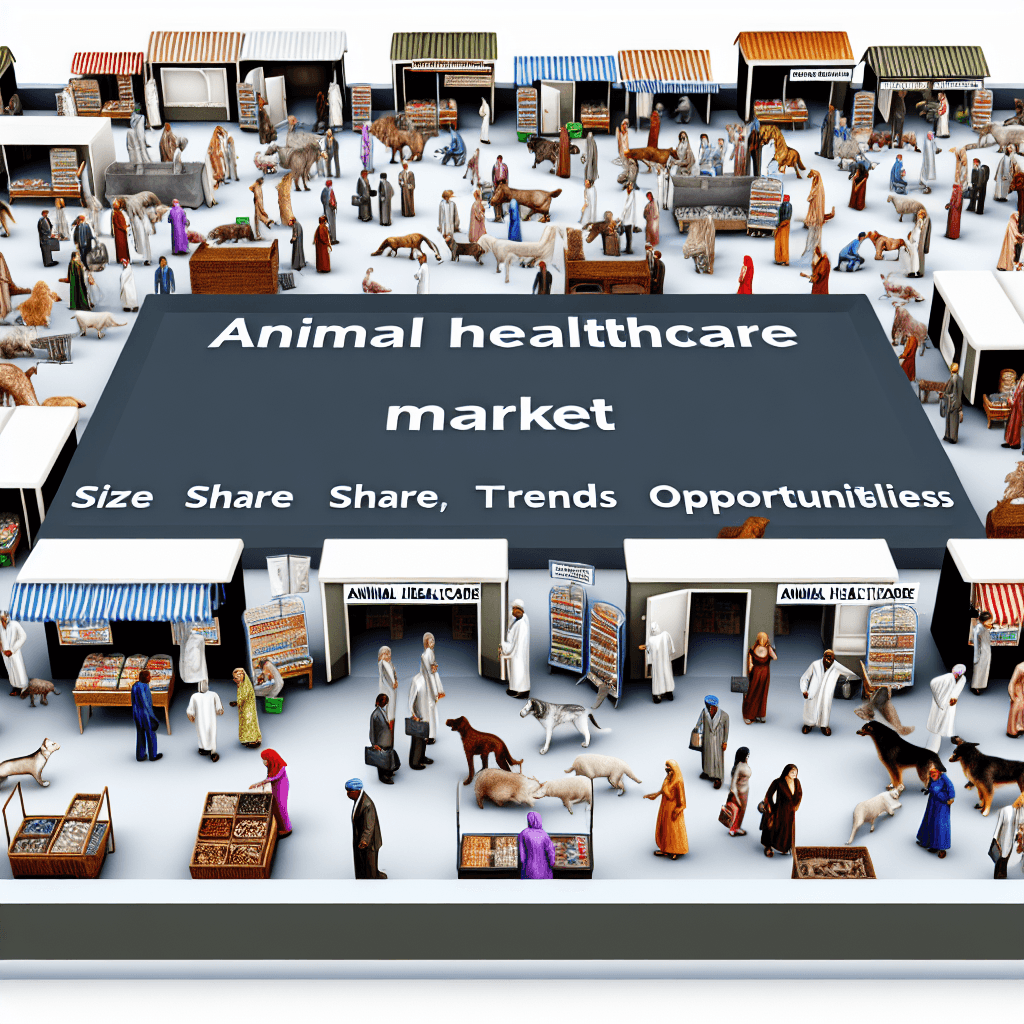Explore the Animal Healthcare Market: trends, size, share, opportunities, and forecasts.
Animal Healthcare Market Size, Share, Trends, Opportunities & Forecast

Table of Contents
Animal Healthcare Market Size, Share, Trends, Opportunities & Forecast

The global animal healthcare market is a dynamic sector that has seen significant growth over the past few years. This growth is driven by increasing awareness of animal health, rising pet ownership, expanding livestock populations, and the growing demand for protein-rich diets. This article explores the current market size, shares, trends, opportunities, and forecasts in the animal healthcare industry, providing a comprehensive overview for stakeholders and interested parties.
Current Market Overview
The animal healthcare market encompasses a wide range of products and services designed to maintain and improve animal health. This includes veterinary services, pharmaceuticals, feed additives, and vaccines. The market’s expansion is fueled by the increasing pet adoption rates and the need for livestock products, which in turn boosts the demand for enhanced animal healthcare services and products.
Market Size and Forecast
According to recent studies, the global animal healthcare market was valued at approximately USD 45 billion in 2022 and is expected to reach over USD 70 billion by 2030, growing at a compound annual growth rate (CAGR) of around 5.9% during the forecast period. This growth is attributed to several factors, including technological advancements in veterinary care, increased spending on pet care, and stringent regulations regarding animal health.
Market Segmentation
The animal healthcare market can be segmented based on animal type, product type, distribution channel, and geography:
- Animal Type: The market is categorized into companion animals and livestock animals. Companion animals, especially dogs and cats, have seen a higher growth rate due to increased pet humanization and spending on pet care.
- Product Type: Includes pharmaceuticals, vaccines, feed additives, and diagnostics. Pharmaceuticals hold the largest market share due to the high demand for parasiticides, anti-inflammatories, and antibiotics.
- Distribution Channel: Veterinary hospitals and clinics are the major channels, followed by retail pharmacies and online pharmacies.
- Geography: North America currently leads the market, followed by Europe and the Asia-Pacific region. The Asia-Pacific region is expected to witness the highest growth rate due to increasing pet adoption and livestock production.
Key Trends and Innovations
Several trends are shaping the future of the animal healthcare market:
- Technological Advancements: Innovations such as telemedicine, wearable health monitors, and AI-driven diagnostics are becoming more prevalent, offering new ways to monitor and treat animal health remotely.
- Regulatory Changes: Governments worldwide are implementing stricter regulations to ensure the safety and efficacy of animal healthcare products, which is influencing market dynamics significantly.
- Focus on Sustainability: There is an increasing trend towards the development of sustainable and environmentally friendly products, such as organic and natural veterinary products.
Opportunities in the Market
The animal healthcare market presents numerous opportunities for growth and innovation. Some of the most promising areas include:
- Expansion in Emerging Markets: Developing countries present significant opportunities for market expansion due to growing animal populations and increasing awareness of animal health.
- Research and Development: There is a continuous need for new and improved products, such as vaccines and pharmaceuticals, to address emerging animal health issues.
- Partnerships and Collaborations: Collaborations between companies and research institutions can accelerate innovation and product development, benefiting the overall market.
Challenges Facing the Market
Despite the opportunities, there are several challenges that the market faces:
- High Costs: The development and regulatory approval of new products can be costly and time-consuming.
- Compliance with Regulations: Navigating the complex regulatory landscape can be challenging for companies in the animal healthcare sector.
- Counterfeit Products: The market faces issues with counterfeit products, which can undermine trust and affect animal health.
Case Studies
Several case studies highlight the impact of innovative practices in the animal healthcare market:
- Telemedicine in Veterinary Care: Companies like Vet-AI have leveraged telemedicine technology to provide remote consultations, significantly improving access to veterinary services.
- Sustainable Practices: Companies such as Zoetis have implemented sustainable manufacturing practices to reduce environmental impact while maintaining product efficacy.
Conclusion
The animal healthcare market is poised for continued growth, driven by technological advancements, regulatory changes, and increasing demand for veterinary services. While challenges such as high costs and regulatory compliance exist, the opportunities for innovation and expansion into new markets present a positive outlook for the future of the industry. Stakeholders in the animal healthcare market must navigate these dynamics carefully to maximize their impact and ensure the health and well-being of animals worldwide.
In conclusion, understanding the size, share, trends, opportunities, and challenges of the animal healthcare market is essential for stakeholders looking to make informed decisions and capitalize on the potential of this growing industry.








